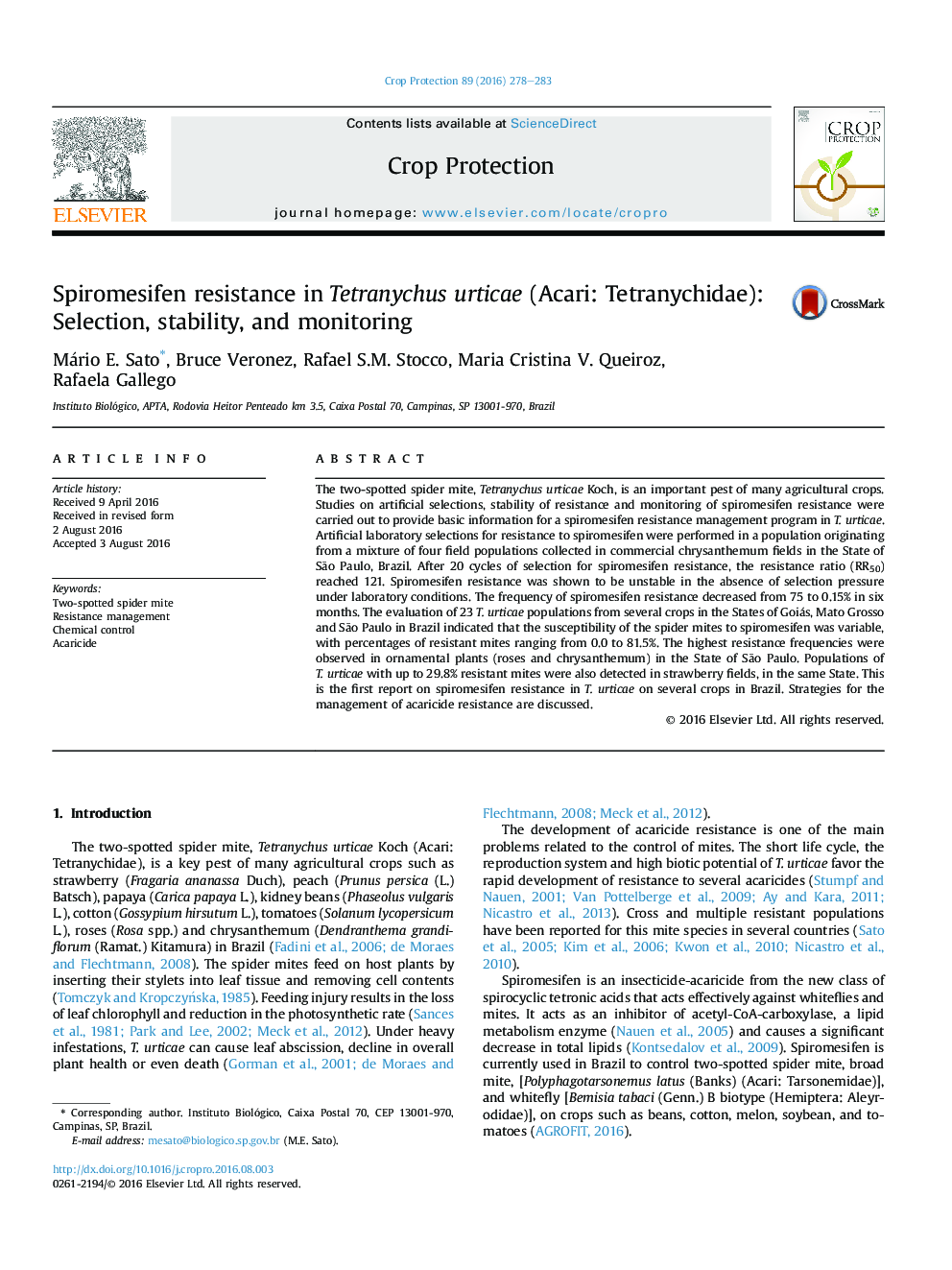| Article ID | Journal | Published Year | Pages | File Type |
|---|---|---|---|---|
| 6373202 | Crop Protection | 2016 | 6 Pages |
Abstract
The two-spotted spider mite, Tetranychus urticae Koch, is an important pest of many agricultural crops. Studies on artificial selections, stability of resistance and monitoring of spiromesifen resistance were carried out to provide basic information for a spiromesifen resistance management program in T. urticae. Artificial laboratory selections for resistance to spiromesifen were performed in a population originating from a mixture of four field populations collected in commercial chrysanthemum fields in the State of São Paulo, Brazil. After 20 cycles of selection for spiromesifen resistance, the resistance ratio (RR50) reached 121. Spiromesifen resistance was shown to be unstable in the absence of selection pressure under laboratory conditions. The frequency of spiromesifen resistance decreased from 75 to 0.15% in six months. The evaluation of 23 T. urticae populations from several crops in the States of Goiás, Mato Grosso and São Paulo in Brazil indicated that the susceptibility of the spider mites to spiromesifen was variable, with percentages of resistant mites ranging from 0.0 to 81.5%. The highest resistance frequencies were observed in ornamental plants (roses and chrysanthemum) in the State of São Paulo. Populations of T. urticae with up to 29.8% resistant mites were also detected in strawberry fields, in the same State. This is the first report on spiromesifen resistance in T. urticae on several crops in Brazil. Strategies for the management of acaricide resistance are discussed.
Related Topics
Life Sciences
Agricultural and Biological Sciences
Agronomy and Crop Science
Authors
Mário E. Sato, Bruce Veronez, Rafael S.M. Stocco, Maria Cristina V. Queiroz, Rafaela Gallego,
